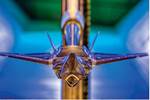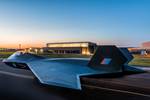Tempest Program receives new funding
Ministry of Defence awards £656 million to BAE Systems for Tempest next-generation combat aircraft program.

The U.K.’s Ministry of Defence (MoD) has reportedly awarded a contract extension worth £656 million to BAE Systems to progress the concepting and technology of the region’s next-generation combat aircraft, Tempest.
The new funding will build on the research and engineering already completed under the first phase of the contract delivered by U.K. Tempest partners (Farnborough, U.K.), Leonardo (London), Rolls Royce (London) and MBDA (Stevenage).
The U.K. Tempest partners, working in close collaboration with the MoD, will now progress the maturity of more than 60 cutting-edge technology demonstrations, digital concepts and new technologies. The group together with partners in Japan and Italy make up the newly created Global Combat Air Programme (GCAP), which will help shape the final requirements for the combat air platform, due to enter service with the Royal Air Force by 2035.
“The next tranche of funding for future combat air will help fuse the combined technologies and expertise we have with our international partners — both in Europe and the Pacific — to deliver this world-leading fighter jet by 2035,” says Ben Wallace, U.K. Secretary of State for Defence.
Tempest is designed to be an innovative stealth fighter with supersonic capability. The aircraft incorporates the use of composite materials and additive manufacturing (AM) technology to produce lightweight, power-dense configurations . Equipped with cutting-edge technologies, including state-of-the-art sensing and protection capabilities Tempest will be one of the world’s most advanced, interoperable, adaptable and connected fighter jets in service.
The program is expected to span many decades, creating thousands of jobs for the U.K., Italy and Japan. There are currently more than 2,800 people working at the U.K. partners and wider industry, with almost 600 organizations on contract, including SMEs and academic institutions.
Related Content
-
Orbital Composites wins AFWERX award for Starfighter drone fleet
Under the TACFI contract, Orbital is implementing the AMCM process to build 3D printed composite multi-mission UAS aircraft, surpassing $10 million in government awards.
-
MATECH C/ZrOC composite is deployed in hypersonic aeroshells
Ultra high-temperature insulating CMC targets hypersonics, space heat shields and other demanding applications, tested up to 2760°C under extreme stagnation pressures.
-
Converting carbon fiber for UHTCMC to 3500°C
Advanced Ceramic Fibers LLC demonstrates ultra-high temperature ceramic matrix composites using SiC and other metallic carbides for applications in aerospace, defense, energy and more.






